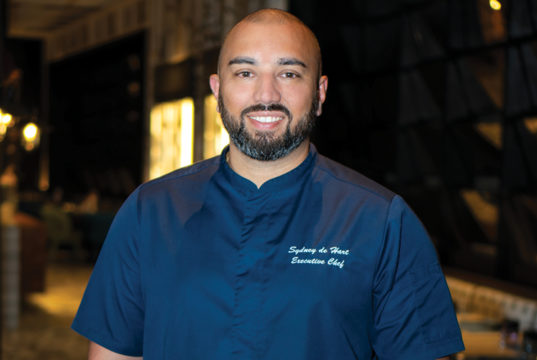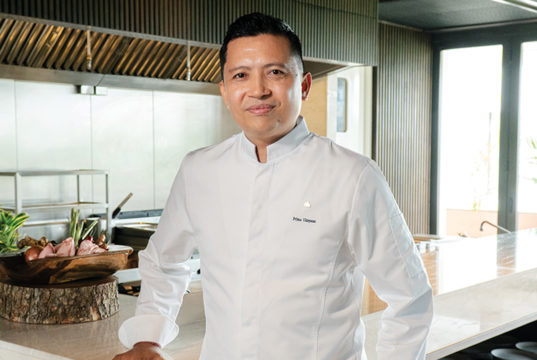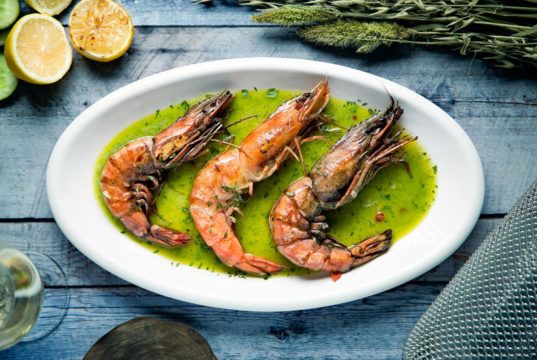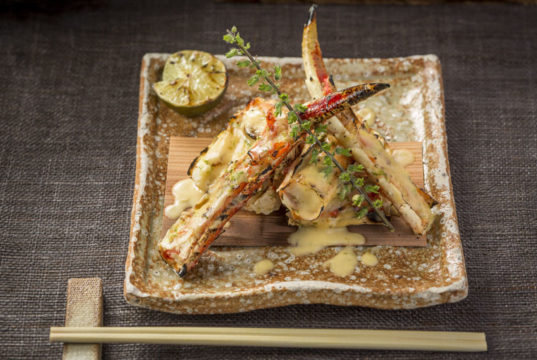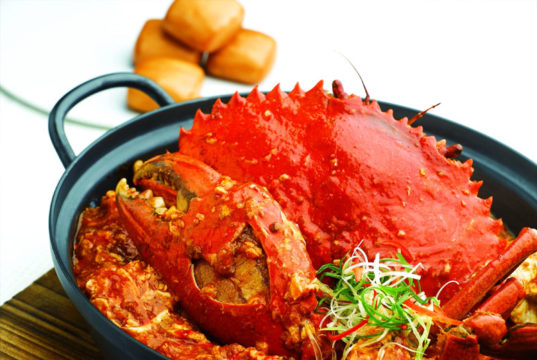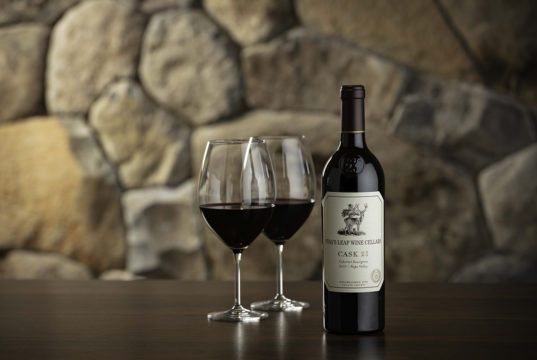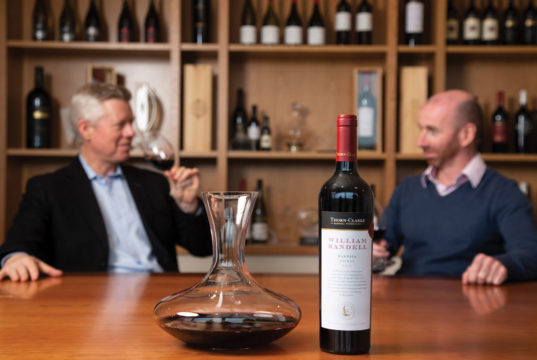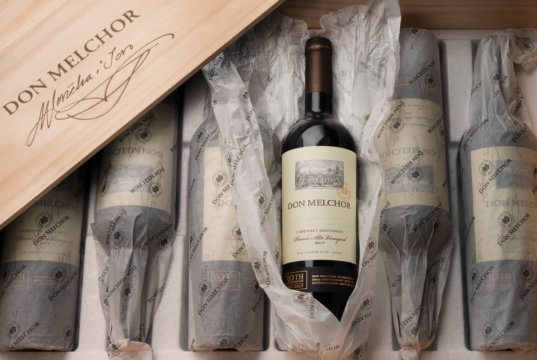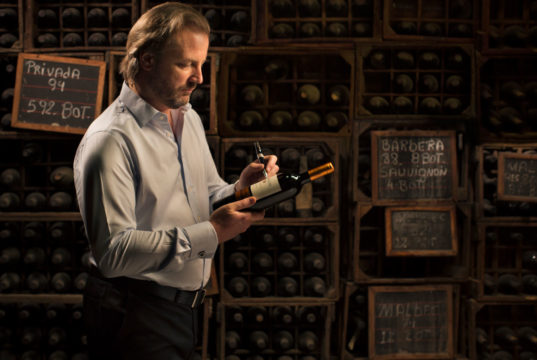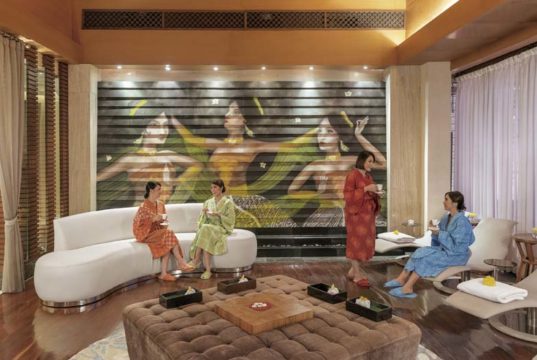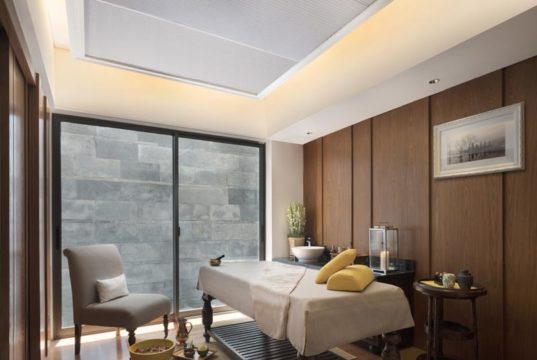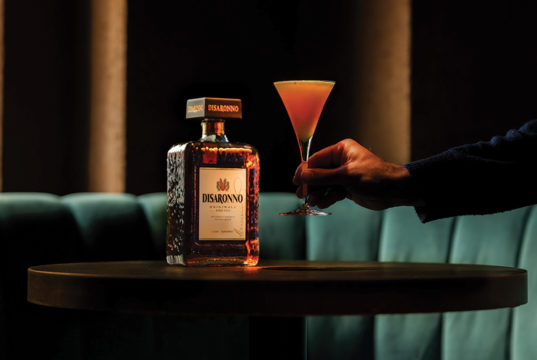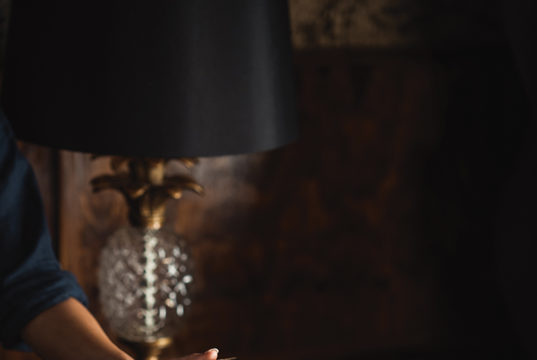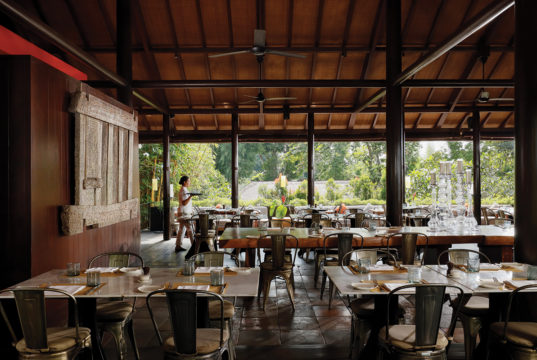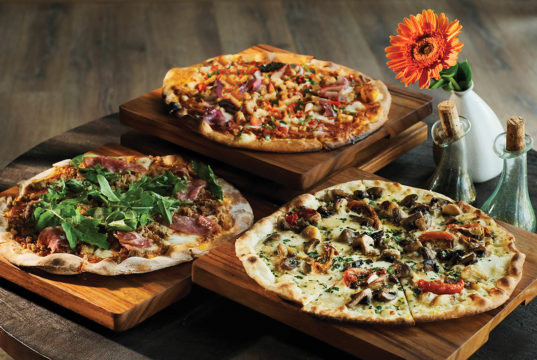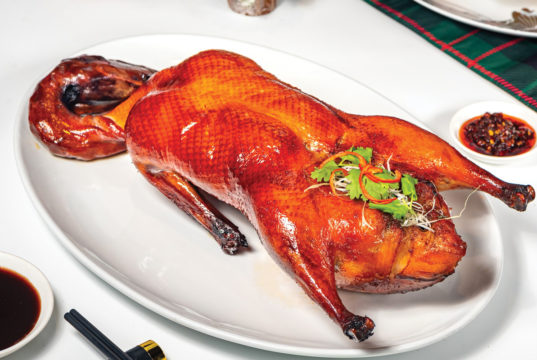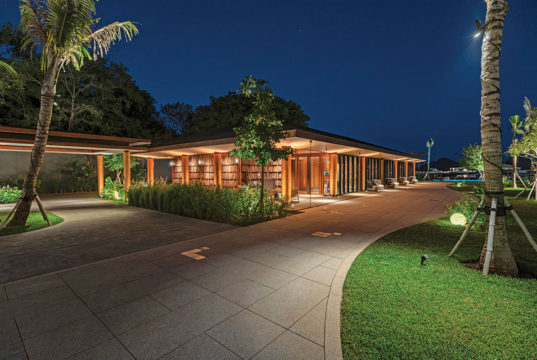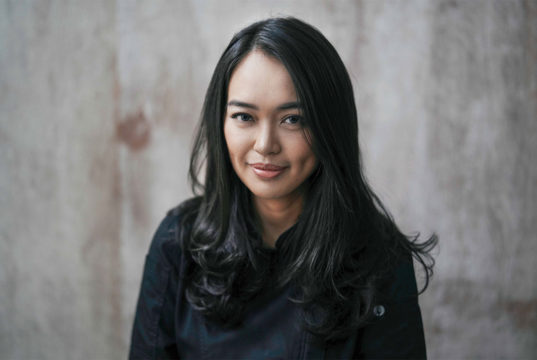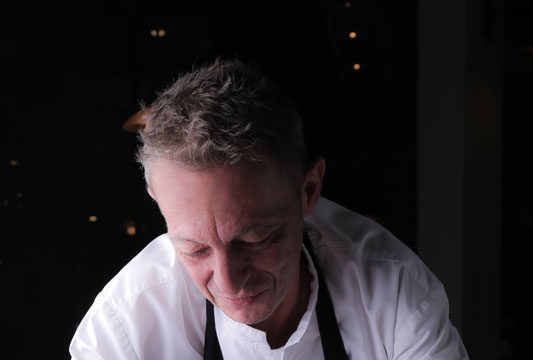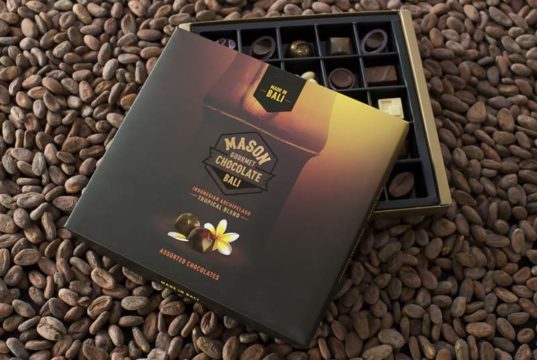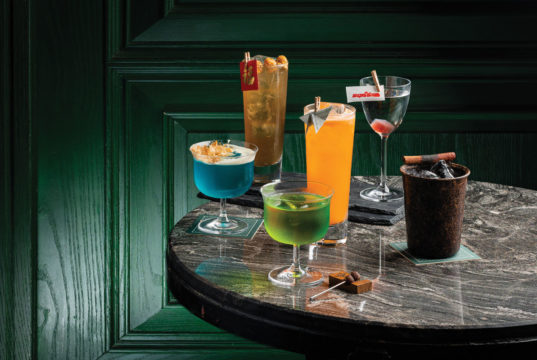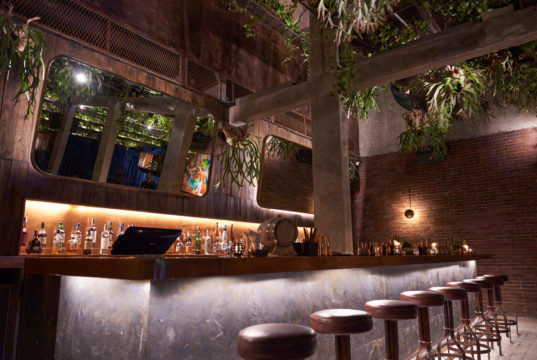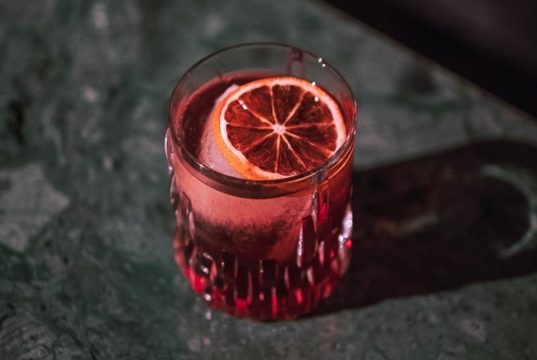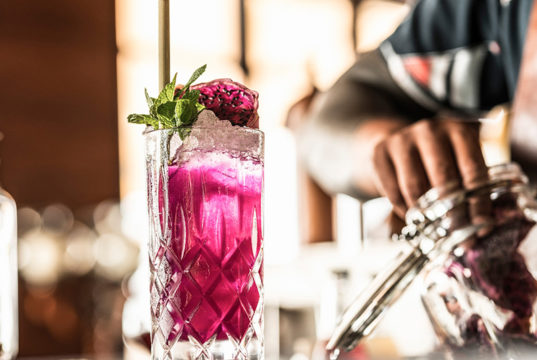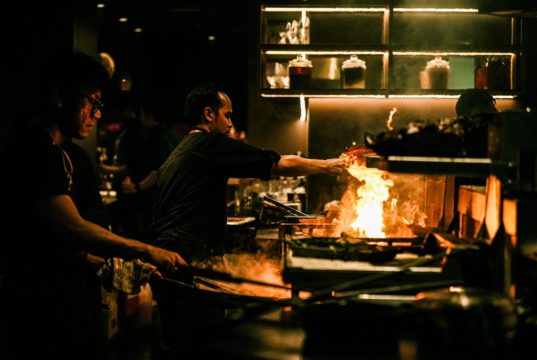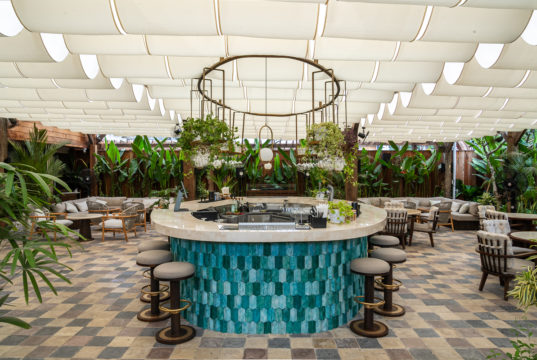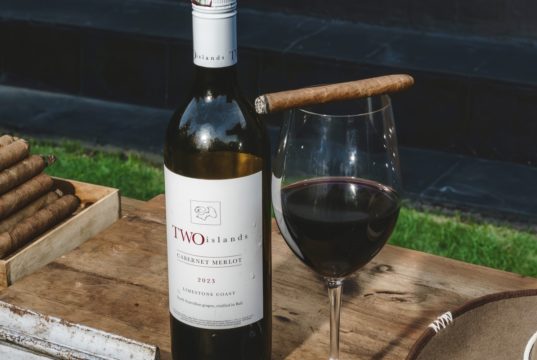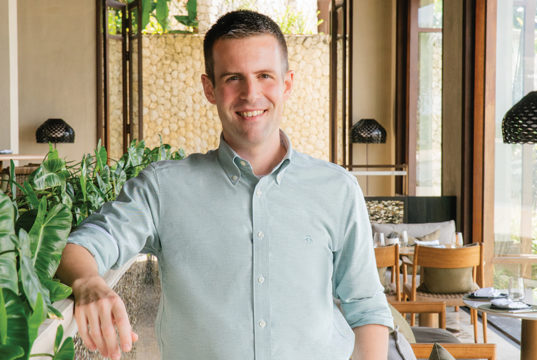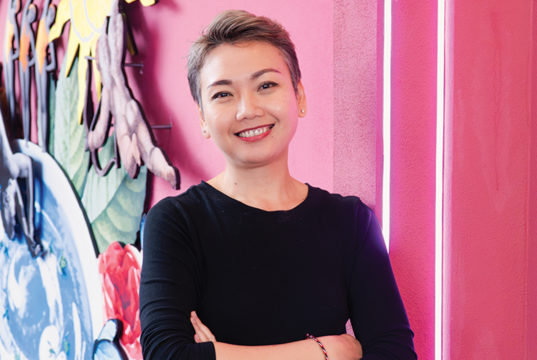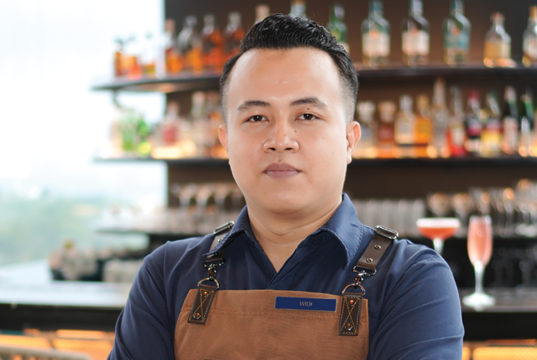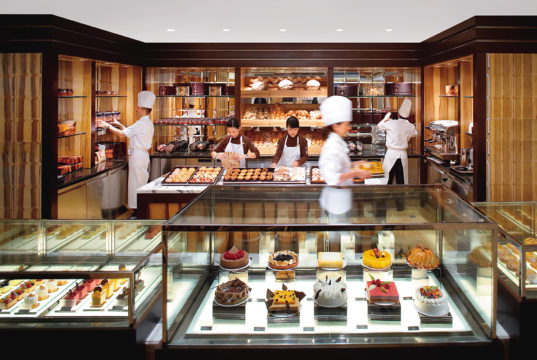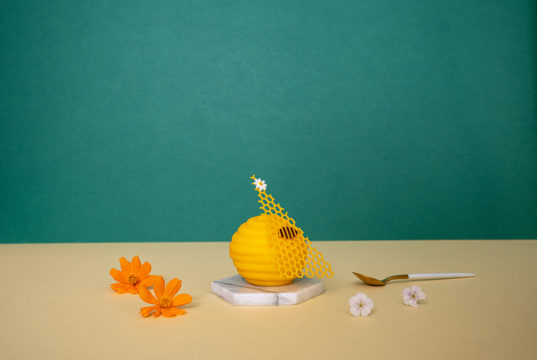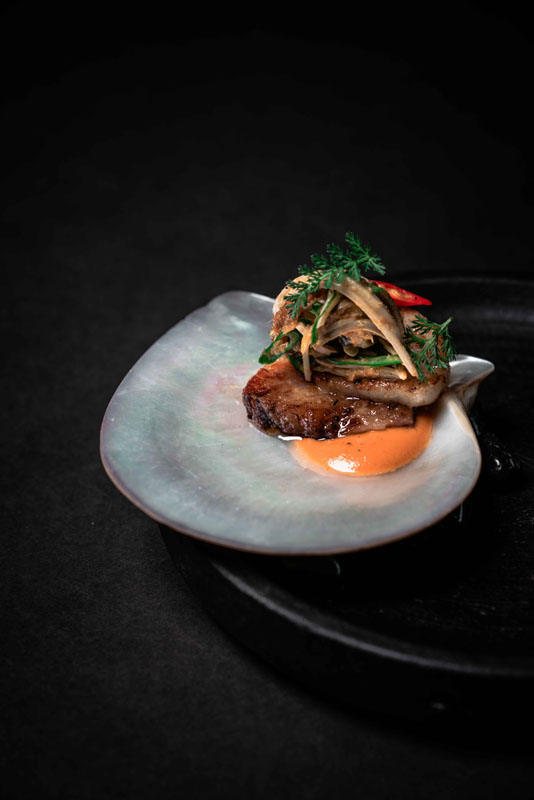
Group Head Chef Maxie Millian works with Executive Chef Kieran Morland at two of the most popular restaurants in Bali, Sangsaka and Merah Putih. Both restaurants, the monikers of which refer to the Indonesian flag, have Indonesian cuisine at their cores, presented in an elevated and refined fashion. The team’s main aim is to put Indonesian dishes in the spotlight and the way they do it is playful and creative, with dishes that blow your mind and at the same time evoke familiar feelings.
The team at Sangsaka has a passionate penchant for exploring the elaborate and extensive regional flavours in Indonesia, combining them with wood-fire cooking techniques – using different kinds of wood for varying results, to craft modern takes on Indonesian gastronomy that are inspired and scrumptious. Diners can choose from the à la carte menu, comprising small and large plate selections. If you can’t make up your mind, however, opt for Sangsaka’s tasting menu, comprising nine dishes over five courses that allow you to experience the culinary team’s creative and innovative skills. The tasting menu changes daily, depending on the fresh produce and ingredients that are available on the day.
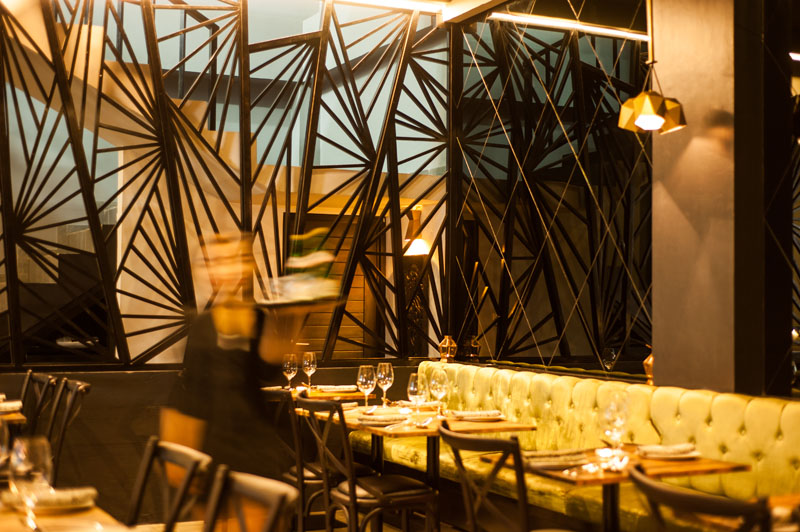
The restaurant itself is stylish yet casual, polished yet comfortable, offering seating with a welcoming ambience for 40 people. The design is subtly sleek and rustic, leaving the focus on the food and drinks. Complementing the outstanding fare is the well-stocked bar with premium spirits and fine wines, inviting diners to stay longer and talk about things worth talking about, like the great feast they have just had.
Must try:
- Slipper Lobster Dumpling with Dabu Dabu
- Scallop with Pork Cheek and Sambal Roa
- Suckling Pig with Rose Apple
Maxie Millian Group Head Chef of Merah Putih and Sangsaka restaurants

E: Who or what have been your biggest influences and inspirations?
M: I regard all the chefs and the people in the teams I’ve worked with as the source of my inspirations. Not just them, but also the street food vendors selling the food I enjoy – I like to think of them as my teachers. The one person who inspired me to choose the culinary path is my mother. She was the one who taught me how to cook home-cooked food, the first person I’ve seen who could fillet a whole fish perfectly. Basically, I like to learn from everything and everyone.
E: What are the most important philosophies that you apply in your career and in the kitchen?
M: Above all the crucial elements in cooking, the most important factor is the flavour. All the dishes we make have to taste delicious. For me it’s important to make the customers who eat my food happy with the dishes. I want to have a positive impact on people’s lives through my food.
E: What do you think of Indonesia’s F&B scene in general?
M: It’s facing rapid growth at the moment, especially compared to five or 10 years ago – and that’s a good thing. I really hope we can all put Indonesian food on the international stage. Career wise, I grew up studying French cuisine and I thought it was complex, but when I really got into Indonesian cuisine, it’s more elaborate and very unique. I really hope all the Indonesian chefs and F&B movers and shakers can keep promoting the cuisine, especially the dishes found in the remote areas of Indonesia. It’s not just fried rice, people, there are many interesting cuisines to discover!
E: Speaking of local values, how important is local produce in your kitchen?
M: Very! I try my best to use as much local ingredients and produce – from vegetables and fruit, to spices, seafood and poultry – as possible. Meat is still a bit challenging, but I can see local wagyu brands, like Tokusen, growing and becoming Indonesia’s wagyu pride in the future.
E: What do you want to achieve/improve in Indonesia’s culinary scene?
M: When we’re talking about Indonesian dishes, gudeg for example, I want people to learn more than just its Javanese origin. I want people – especially the young generation – to know the history behind the food, the stories of how it was first created, what year, the purpose behind the techniques, and more.
E: Can you elaborate on the concepts of Merah Putih and Sangsaka?
M: We want to bring Indonesian food to the next level with both restaurants, and to elevate the dishes without losing their authentic flavours. Yes, we serve the dishes in with modern presentation, but we want people to recognise the taste. While Sangsaka focuses more on wood fire techniques and is more intimate, at Merah Putih we want to bring back the sharing, family-style kind of dining experience you find in most Indonesian families’ homes.
E: Your journey has taken you to as far as Dubai, what made you come back to Indonesia, particularly Bali?
M: I worked abroad for nine years and came to the point where I wanted to go home to learn more. I chose Bali because here I can work and be creative, and still enjoy life at the same time. From the professional angle, I can easily interact and work closely with farmers in Bali, we can discuss what sort of produce I want to use, and I’ve developed a newfound respect for farmers from it.
E: What tips would you give any young Indonesian looking to break into the culinary industry?
M: Just be crazy, be creative and break the boundaries. Don’t be afraid to step out of the comfort zone, and remember that dedication, hard work and the drive to learn are important.
Jalan Pangkung Sari 100X, Kerobokan
Bali 80361, Indonesia
T: (+62) 81236959895
E: info@sangsakabali.com
sangsakabali.com
Exquisite Taste June – August 2019




